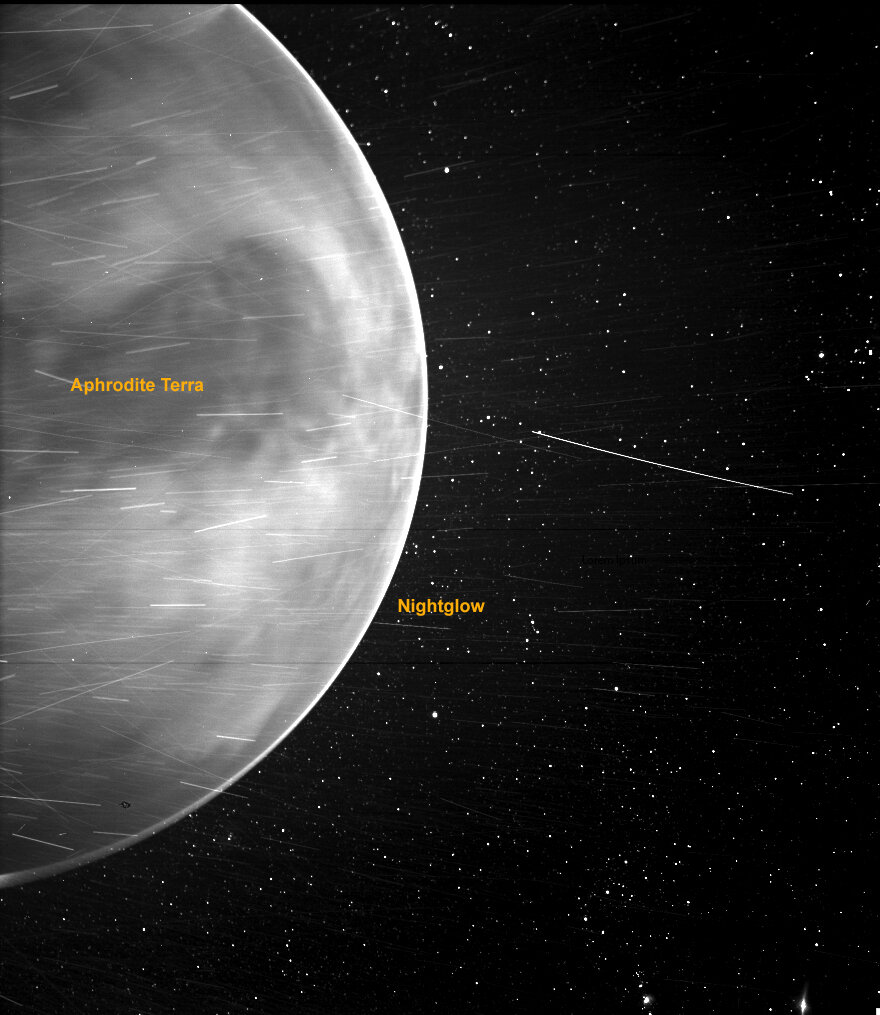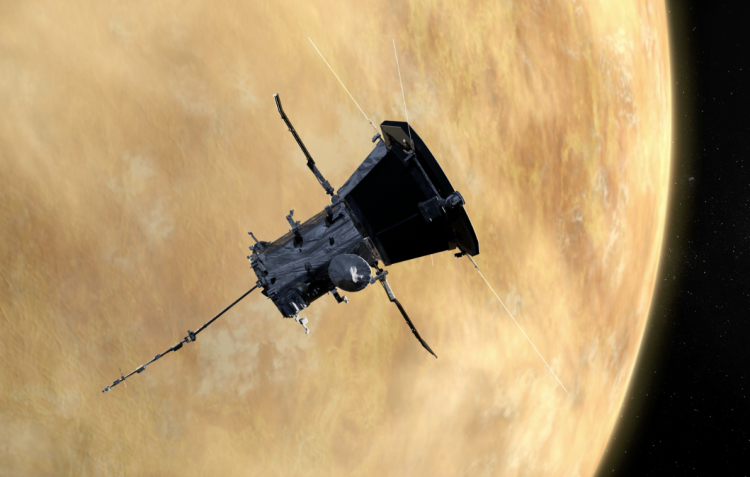FighterJock
ACCESS: Above Top Secret
- Joined
- 29 October 2007
- Messages
- 5,610
- Reaction score
- 5,941
Interesting to see that the Parker Solar Probe has broken its own speed and distance record while in orbit around the sun.
It will also break both again in the future.Interesting to see that the Parker Solar Probe has broken its own speed and distance record while in orbit around the sun.
Using data from NASA's Parker Solar Probe (PSP), a team led by Southwest Research Institute identified low-energy particles lurking near the Sun that likely originated from solar wind interactions well beyond Earth orbit. PSP is venturing closer to the Sun than any previous probe, carrying hardware SwRI helped develop. Scientists are probing the enigmatic features of the Sun to answer many questions, including how to protect space travelers and technology from the radiation associated with solar events.


Successful Ninth Solar Flyby for Parker Solar Probe
Sarah Frazier Posted on August 13, 2021
On Aug. 13, 2021, at 5:50 a.m. EDT, mission controllers at the Johns Hopkins University Applied Physics Laboratory, in Laurel, Maryland, received a “tone one” beacon from Parker Solar Probe, indicating that all systems were healthy and operating normally after the spacecraft’s ninth close approach to the Sun on Aug. 9.
During this close pass by the Sun — called perihelion — Parker Solar Probe matched its own records for spacecraft distance from the Sun and speed, coming to within about 6.5 million miles (10.4 million kilometers) of the Sun’s surface, while moving faster than 330,000 miles per hour (532,000 kilometers per hour).
Science data collection for this solar encounter continues through Aug. 15.
View: https://mobile.twitter.com/nascom1/status/1457538846426427394Parker Solar Probe has now completed its K-Band Science return phase and just started its X-Band Pre-Solar encounter phase. Commands will be uploaded for encounter number 10 over the next week. Perihelion is the 21 November. Canberra's DSS34 is currently supporting.
@NASASun
NASA’s historic mission to “touch the Sun” has encountered a heavy bombardment of dust, surprising mission scientists and resulting in some fascinating new data about the Parker Solar Probe’s increasingly hostile environment.
“These observations are ‘happy surprises’ in that the impact explosions produce clouds of material so dense that we can watch fundamental solar wind physics operate in a way that would not be possible otherwise,” David Malaspina, a research scientist from the Laboratory for Atmospheric and Space Physics at the University of Colorado, explained in an email. “They are also ‘happy surprises’ in that the impacts so far have not been large enough to overcome the dust impact shielding designed into much of the Parker Solar Probe spacecraft.”
The total number of collisions now number in the tens of thousands, and the probe has endured intense periods during which it was struck by hypervelocity dust grains once every 12 seconds on average, according to Malaspina. Most impacts aren’t producing debris and dense plasma clouds, but the team did manage to identify around 250 very high-energy impacts that occurred during Parker’s first eight orbits of the Sun.
That said, an energetic particle instrument is beginning to degrade; the impacts have punched a hole through the device, “allowing sunlight to reach the instrument’s sensitive detectors, and driving up their noise levels,” Malaspina explained. But he’s not worried. Even taking the greater density of dust into account, “the updated predictions for the probability of catastrophic failure suggest that there is a high probability—but not 100%—that Parker Solar Probe will survive all 24 planned orbits,” he said.

.@NASASun’s #ParkerSolarProbe continues its record-breaking journey to Sun. I am pleased by its performance so far and happy to report that it is healthy and performing normally as it heads toward its next closest approach to the Sun on Nov. 21:
 blogs.nasa.gov
blogs.nasa.gov
Happy 4th birthday to @NASASun's Parker Solar Probe!
As it travels through the Sun's atmosphere, Parker has faced temperatures up to nearly 1500 F (800 C), space dust that could degrade materials and instruments, and intense light and high-speed particles from our Sun.
Parker has handled the extreme conditions so well that the science team has collected nearly 3 times more data than they'd hoped for. Learn what's next for the intrepid solar explorer as it prepares for its 13th approach during an intense solar maximum:
Discover the groundbreaking mission of NASA's Parker Solar Probe as it ventures closer to the Sun than any spacecraft before. Unveiling the secrets of our star, this remarkable probe has touched the Sun's upper atmosphere and unraveled the origins of the fast solar wind. Dive into the extraordinary findings and technological feats of this historic journey, revolutionizing our understanding of the Sun and its impact on Earth. Explore the implications for space weather prediction and the broader field of stellar physics. Join us on this captivating exploration of the Parker Solar Probe's remarkable mission.
Venus may be a (slightly) gentler place than some scientists give it credit for.
In new research, space physicists at CU Boulder have jumped into a surprisingly long-running debate in solar system science: Does lightning strike on the second planet from the sun?
The team’s results add strong new evidence suggesting that, no, you probably wouldn’t see bolts of lightning flashing from Venus’ thick, acidic clouds—or, at least, not very often.
When the researchers analyzed a set of those whistlers, however, they noticed something surprising: Venus’ whistler waves were headed the wrong way. They seemed to be moving down toward the planet, not out into space like you’d expect from a lightning storm.
“They were heading backward from what everybody had been imagining for the last 40 years,” Malaspina said.
What is causing these backward whistlers isn’t clear. George and Malaspina suspect that they may emerge from a phenomenon called magnetic reconnection—in which the twisting magnetic field lines that surround Venus come apart then snap back together with explosive results.

